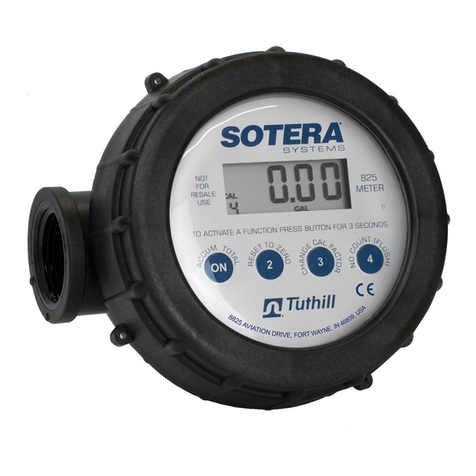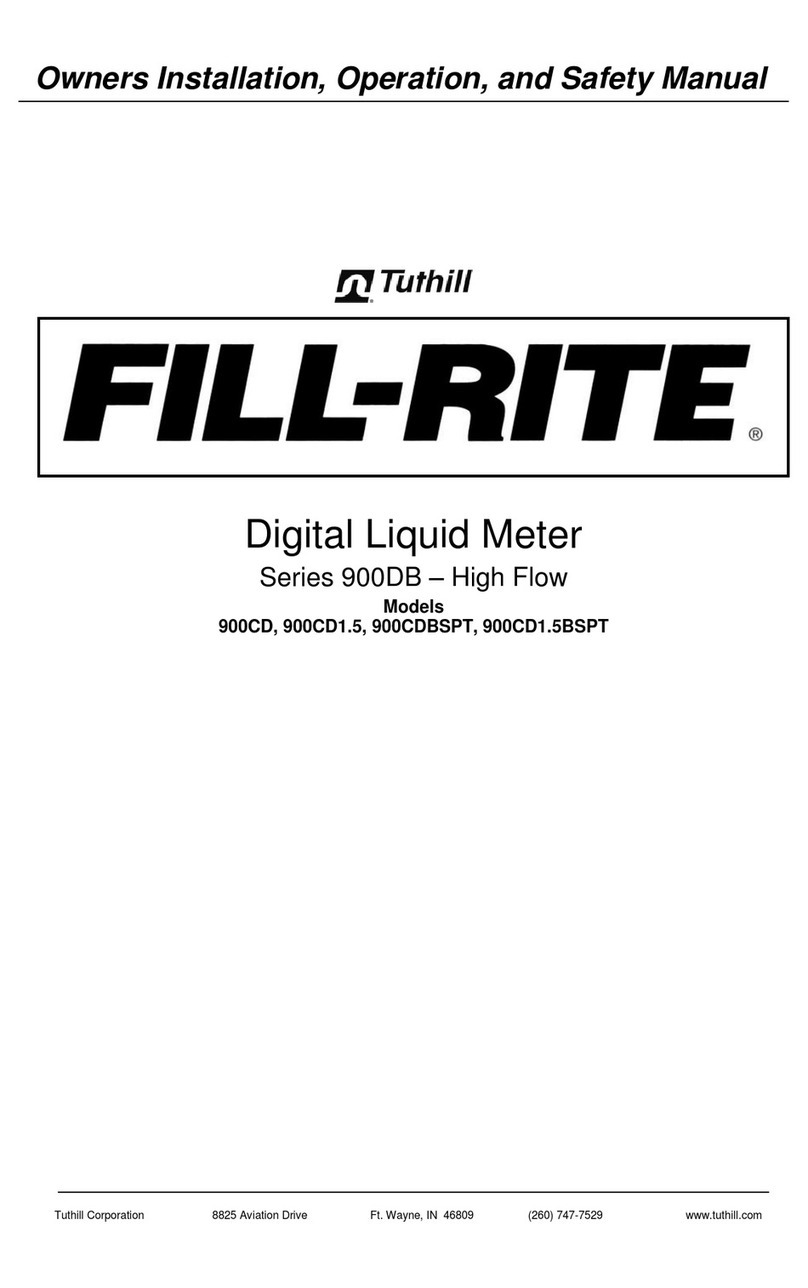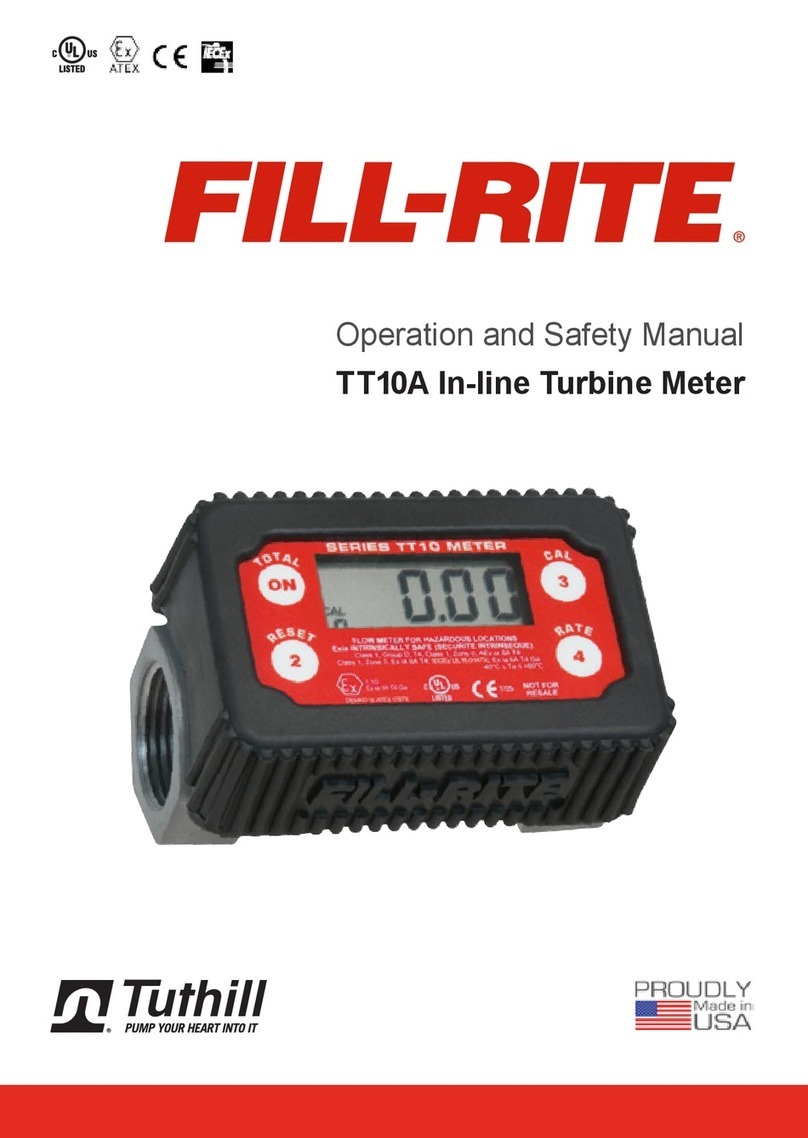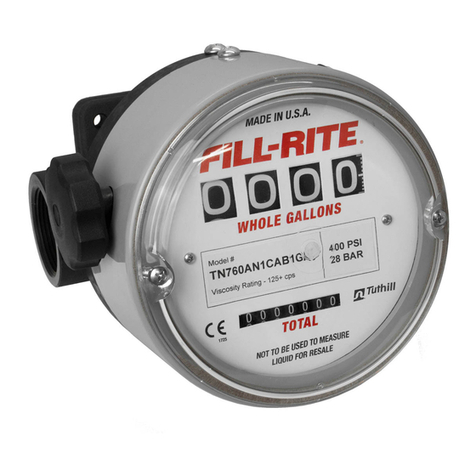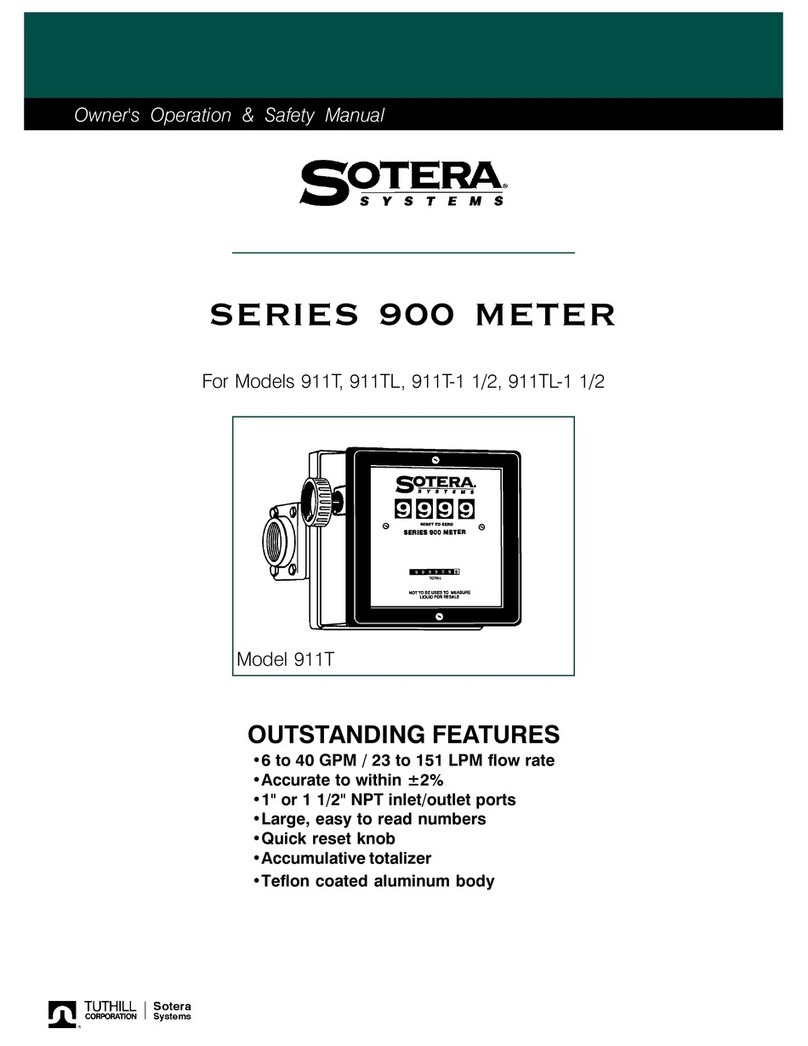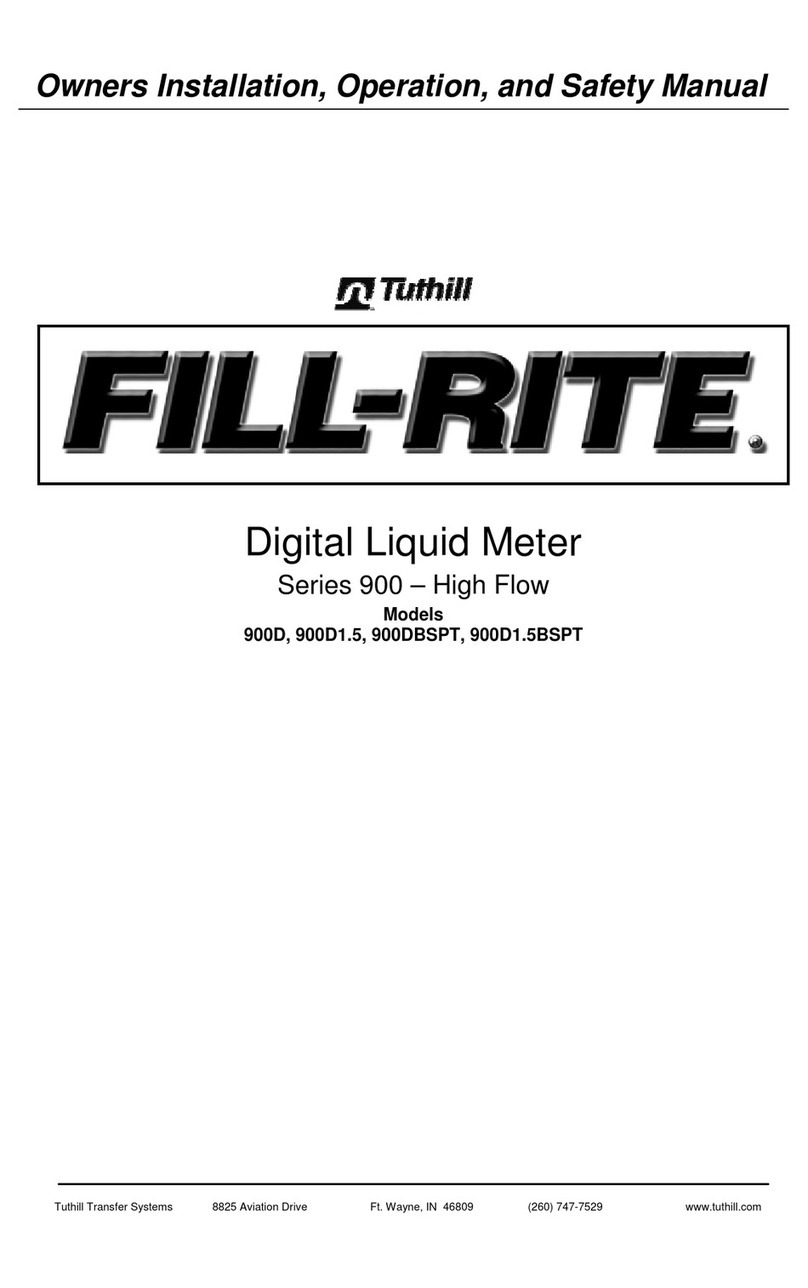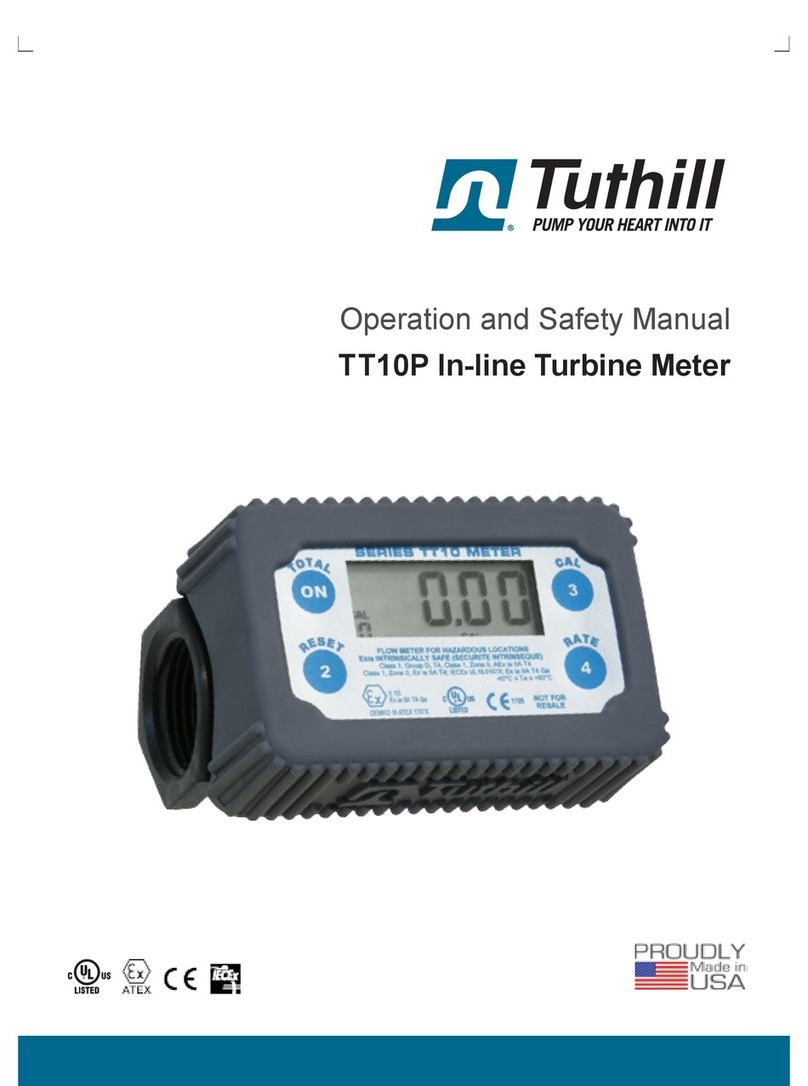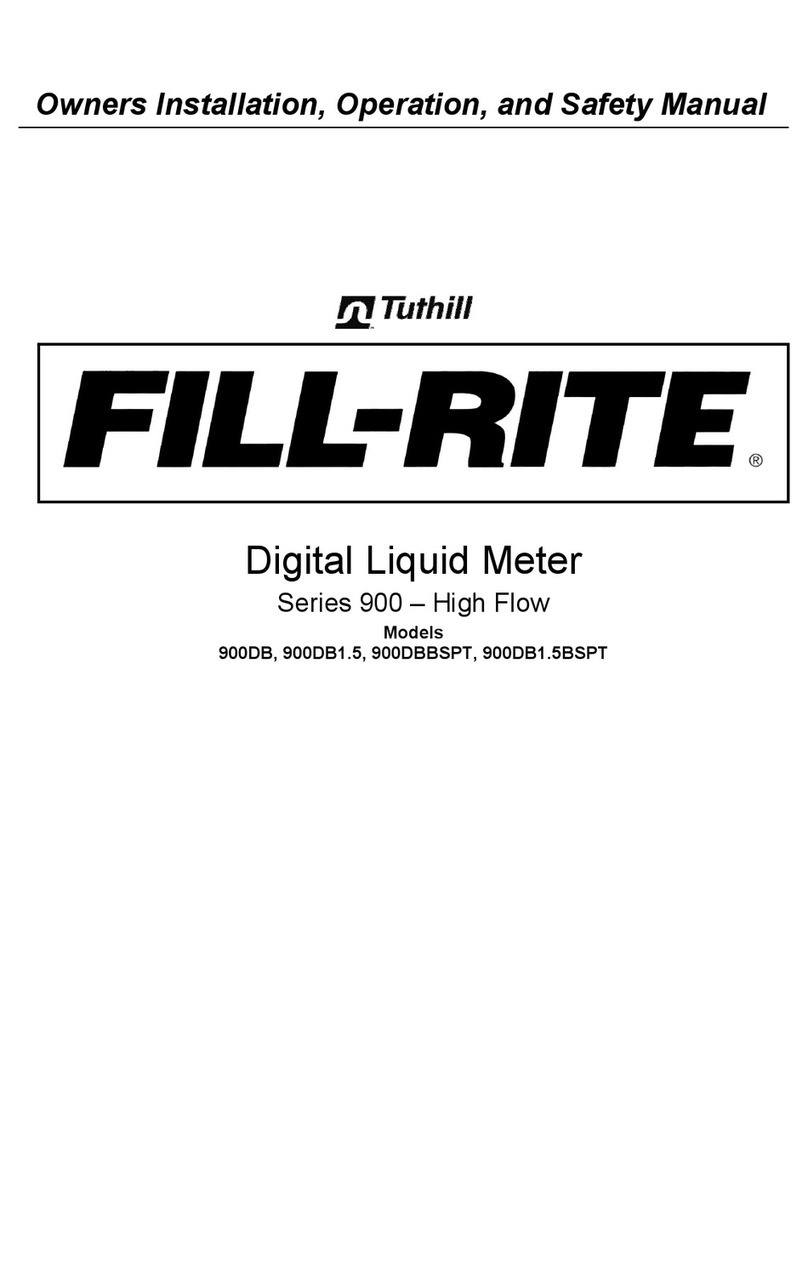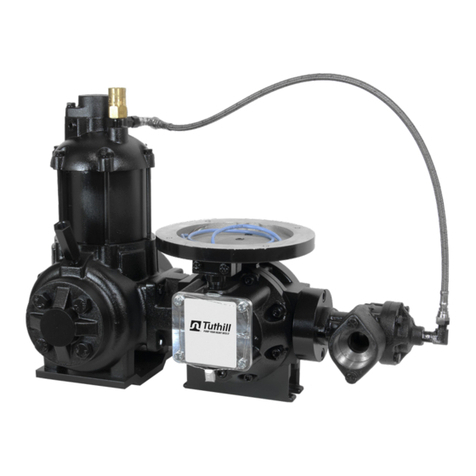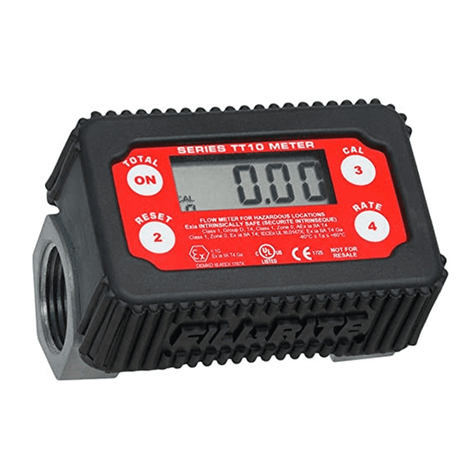
Fluid Calibration
Fluid calibration requires a container of a known volume
at least 5 gallons or larger that is compatible with the uid
being metered.
A larger volume may be used and may improve calibration
accuracy, but do not exceed 99.99 units of measure.
NOTE
Before performing a uid calibration, ensure you
have selected the closest matching CAL/Fluid factor
to ensure the best meter accuracy.
1. Press the 2 & 4 buttons at the same time and hold
for 3 seconds. The display will show the rmware
version.
2. Press button 3 to enter calibration mode. The unit of
measure will be displayed.
3. Press button 3 . The display will read "FILL".
4. Now dispense uid into your container. "FILL" will blink
on the display when ow is detected.
5. After dispensing uid, press the ON button. The left
digit of the display will blink. ("00.00")
6. Press button 4 to increment the digit to the amount
of uid dispensed (example: "05.00"). Press the ON
button to move to the right. If you make a mistake,
press button 2 to start back at the left-most digit.
7. After number is loaded, press the ON button again
to accept the entered volume.
8. Display now shows the congured CAL factor.
9. Press the ON button again and the rmware version
will be displayed.
10. Press the 2 button again to return to normal
operating mode.
NOTE
If the value entered is out of an acceptable range,
the display will read "Err0" and the meter will revert
to the previous settings. See Troubleshooting Guide
for more information.
TIP
If you are metering in ounces, pints, or quarts, it
may be easier to switch the meter to a larger unit of
measure such as gallons or liters for the calibration
process and then change back to the desired unit of
measure.
Flush Mode (FLSH)
Use of Flush mode allows you to ush the meter without
adding volume to the meter totals. This is useful when
ushing the meter for storage or switching between
different liquids and you want to maintain accurate totals.
1. Hold buttons 3 and 4 for 3 seconds. The Meter will
display "FLSH".
2. Press button 2 to return to normal operating mode.
Reset Accumulated Total
1. Press and hold buttons 2 and 4 for 3 seconds.
The current rmware version will be displayed.
2. Press the ON button to display the accumulated total.
If over 9999 units, the accumulated total will scroll
across the display.
3. Hold buttons ON and 4 together for 5 seconds to
reset the accumulated total.
4. Press the 2 button twice to return to normal operating
mode.
K-Factor Check
You can check the internal calibration factor for the meter.
The displayed value is the number of sensor counts per
selected unit of measure and CAL/Fluid factor. Thefactory
mayaskyouforthisvalueiftroubleshootingtheMeter.
1. Hold buttons 3 and 4 for 3 seconds. The Meter will
display "FLSH".
2. Press and hold buttons ON and 3 together. The
number of counts per unit of measure will be displayed.
3. Press button 2 to return to normal operating mode.
Battery Replacement
Batteries should be replaced when the LOW battery
icon begins to blink on the display. The meter totals,
conguration, and calibration are preserved while the
batteries are being replaced, so there is no need to
recalibrate afterwards.
WARNING!
When replacing batteries, make the area safe of
explosive vapors, or move the meter electronics to
a safe area before replacing them.
4
